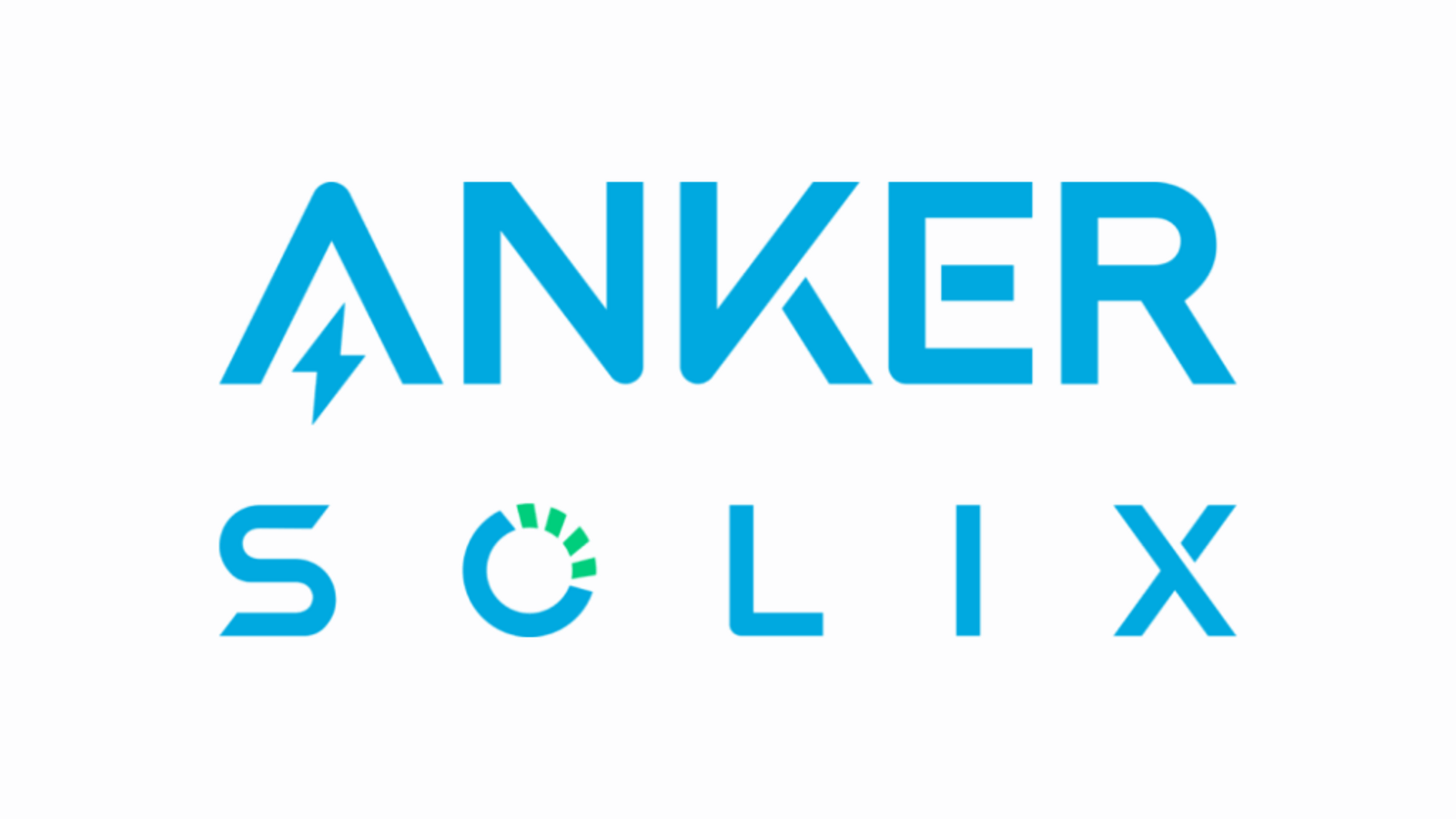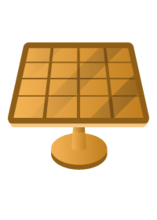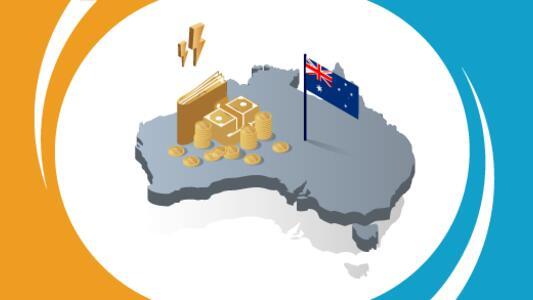Best Solar Feed-in Tariffs in VIC, SA, NSW, QLD, and More!
One of the biggest benefits of installing solar panels is the ability to earn money through a solar feed-in tariff. In this guide, we not only explain what a solar feed-in tariff is but also reveal the best solar feed in tariff NSW, best solar feed in tariff QLD, best solar feed in tariff VIC, and best solar feed in tariff SA, helping you choose the optimal plan for your needs. Whether you’re looking to maximize your investment or reduce your electricity bill, this guide provides expert insights to help you choose the right plan.
Guide to the Best Solar Feed in Tariffs in Australia
A solar feed-in tariff is an energy plan that lets you send excess power from your solar PV system back to the grid for payment. In other words, when your panels produce more electricity than you use, the surplus is exported and you’re compensated – usually as a credit on your energy bill.
This is especially useful if you don’t have battery storage. Without a feed-in tariff, any excess energy would simply go to waste. Instead, signing up for a feed-in tariff means you can earn extra money, helping to offset the initial cost of your solar system.
Let's break this concept down a bit further:
If your solar panels are generating more solar energy than your home uses, the excess electricity will be wasted unless you have a battery bank (to store the energy for later) or a feed-in tariff to export it to the energy grid.
Signing up for a feed-in tariff is the only way to send your excess energy back to the grid. You can sign up for a feed-in tariff through most energy providers. Once you have registered to a plan, your energy provider will pay you for the excess electricity you generate usually via credit on your energy bill.
There are several different feed-in tariff plans which offer different amounts of money for each unit of electricity (kWh) you send back to the grid.
The extra money you generate can be a good incentive for purchasing solar panels as it can help you pay off the investment sooner.
However, let's not forget the main benefits of solar panels.
Benefits of Solar Panels
- You can use your solar power to heat your water, heat your home, or even to heat your swimming pool.
- Reduce your dependency on the grid by generating your own energy.
- Lower your electricity bills and potentially pay off your solar investment faster.
- Earn money from excess energy through feed-in tariffs.
- Access government grants and tax incentives to reduce installation costs.
- Solar energy is a form of renewable energy and every bit helps Australia reach its renewable energy target even sooner.
If you have solar panels, it’s important to understand how much electricity your household consumes, as well as how much electricity your panels generate, in order to choose the best solar feed-in tariff for your lifestyle.
- How do solar panels reduce your electricity bill?
- Solar panels decrease your reliance on the grid by generating clean, renewable energy. Any surplus energy is sent back to the grid, earning you credits or cash rewards – directly reducing your monthly electricity expenses.
Looking for a Solar Quote or the cheapest Solar Panel Installation?
Click now or call our providers to find the cheapest deal for your needs!
Average Solar Feed-in Tariffs in Australia
The average solar feed-in tariff varies widely by state as each region has its own regulations.
Currently, Victoria, Tasmania, Western Australia and Northern Territory are the only regions to set minimums for feed-in tariff export rates. This means that any provider offering export plans must offer the established minimum rates in these regions. While some states offer rates as low as 2¢/kWh, many providers offer much higher payouts – sometimes over 20¢/kWh.
Here is a table showing the expected minimum feed-in tariff rates for each state so you can find the best solar feed in tariff VIC, SA, NSW, QLD, and more:
| State | Average Minimum Feed-in Tariff Rate | Minimum Reference |
|---|---|---|
| NSW | 4.6c - 5.5c/kwh | Benchmark minimum |
| ACT | 7c/kWh | Benchmark minimum |
| VIC | 6.7c/kWh | State-regulated minimum |
| QLD | 6.6c/kWh | Ergon minimum |
| SA | 4.0c - 6.0c/kwh | Benchmark minimum |
| WA | 2.75c - 3c/kWk | DEBS minimum |
| TAS | 6.501c/kwh | State-regulated minimum |
| NT | 8.3c/kwh | State-regulated minimum |
The table above represents the minimum rate you should look to receive in each state. However, as mentioned before, take a look around as you can typically find better offers.
Green Power Want to still invest in renewable energy but can't afford to install solar? Green Power is a government-led initiative with Australian companies to allow anyone to invest and commit energy providers to use more renewable energy, for only a few cents per kWh.

Anker Solix offers reliable solar panels, along with batteries and generators to keep your home powered on or off the grid. Their scalable battery systems and portable solar generators make it easy to capture and store solar energy for everyday use or backup needs.
Best Solar Feed-in Tariffs in Australia
If you’ve decided your solar PV system is large enough, and you’ll end up exporting more energy than you use, you’ll probably want to find the best solar feed-in tariff on the market. While most energy providers offer some sort of solar feed-in tariff, these are among the highest available in each state.
Choose your state from the dropdown list below to see the highest paying solar feed-in tariffs in your state.
Best Solar Feed-in Tariff NSW
For those looking for the best solar feed in tariff NSW, our detailed breakdown ensures you get the most value for your solar investment. Residents of New South Wales enjoy a lot of choices when it comes to their energy provider and solar feed-in tariffs.
NSW is also the state with the highest payout rate for feed-in tariffs. Many providers in the state are increasing their FiT rates, so those who live there can earn even more with their excess electricity.

|
|
| N/A |

|
|
| First 8kWh per day, then 3.0¢ |

|
|
| System Size 10kW max |

|
|
| Capped at first 5kWh per day |

|
|
| System Size 10kW max |

|
|
| Only if you buy solar through Origin |

|
|
| N/A |

|
|
| N/A |
Best Solar Feed-in Tariffs ACT
For those looking for the best solar feed in tariff ACT, our detailed breakdown ensures you get the most value for your solar investment. Due to the regulation of the energy market in the ACT, solar feed-in tariffs aren’t as high as in other states.
However, if you are interested in installing solar panels onto your home but don’t have any yet, it's worth looking into Origin Energy’s Solar Boost Plus plan which offers 20¢/kWh if you purchase your solar PV system through them.

|
|
| Must purchase solar through Origin, 10kW max |

|
|
| System size 10kW max |

|
|
| System size 10kW max |

|
|
| N/A |

|
|
| N/A |

|
|
| N/A |
Best Solar Feed-in Tariffs VIC
For those looking for the best solar feed in tariff VIC, our detailed breakdown ensures you get the most value for your solar investment. As stated, Victoria is the only state to have a minimum solar FiT.
All energy providers in Victoria must offer at least 3.3¢/kWh for the solar energy their customers generate. This is because the state of Victoria has set a regulatory minimum for solar feed in tariff offers. While this is a great consumer protection practice that ensures nobody a bad deal for exporting their energy, 6.7c/kWh is still relatively low versus current deals on the market.
Here is a table showing some of the highest paying solar feed-in tariffs in Victoria:

|
|
| N/A |

|
|
| N/A |

|
|
| Must purchase solar through Origin, 10kW max |

|
|
| N/A |

|
|
| System size 10kW max |

|
|
| N/A |

|
|
| N/A |
If you opt for a time varying feed-in tariff in VIC, the hours and rates are as follows:
| Off-peak |
|
| N/A |
| Shoulder |
|
| N/A |
| Peak |
|
| N/A |
Best Solar Feed-in Tariffs QLD
For those looking for the best solar feed in tariff QLD, our detailed breakdown ensures you get the most value for your solar investment. If you live in rural or regional Queensland, where Ergon Energy is the only energy provider, your solar feed-in tariff is set by the Queensland government. Here you can expect to get a standard 6.6c/kWh for your feed-in tariff.
However, If you live in South-East Queensland, you can choose your energy provider and this means you are also able to shop around for the best solar FiT in Queensland.
Here is a table showing the highest paying solar feed-in tariffs in South East Queensland:

|
|
| N/A |

|
|
| Must purchase solar through Origin, 10kW max |

|
|
| N/A |

|
|
| N/A |

|
|
| N/A |

|
|
| N/A |

|
|
| System size 5kW max |

|
|
| Capped at 5kW per day |
Best Solar Feed-in Tariffs SA
For those looking for the best solar feed in tariff SA, our detailed breakdown ensures you get the most value for your solar investment. While South Australia has some of the highest electricity rates on the market, customers also get access to some relatively high solar feed-in tariffs.
Many energy providers in the state have recently increased their maximum feed-in tariff rates, so you now have more providers to choose from if you’re looking to maximize your solar output.
Here is a list of the highest paying solar feed-in tariffs in South Australia:

|
|
| System size 30kW max |

|
|
| System size 10kW max |

|
|
| N/A |

|
|
| Must purchase solar through Origin, 10kW max |

|
|
| System size 5kW max |
How to Choose The Right Solar Feed-in Tariff
Energy providers offer a wide range of solar feed-in tariffs but it’s important to understand your solar PV system and household’s energy consumption habits before choosing the highest FiT you can find.
There are two important factors to consider when choosing a solar feed-in tariff:
- Discount off the reference price
- Export payout rate

Oftentimes, electricity plans with higher than average export rates will have a lower discount off the reference price or offer no discount at all.
This is because some suppliers believe offering a discount and a payout rate is too much of an advantage to customers.
However, the opposite is also true: choosing an electricity plan with a higher discount will often mean a smaller feed-in tariff.
Therefore, with most feed-in tariffs the discount off the reference price and the payout rate are constantly in competition.
For this reason, it's best to consider your needs, the size and output of your panels, and how much you expect to send back to the grid on a regular basis.
If you have a small PV system and won't be sending much energy back to the grid, you may want to opt for a plan with a higher discount off the reference price and vice versa.
In the table below we show you when it pays to choose a higher payout rate vs when to choose a higher discount price:
| Choose a Higher Payout Rate if: | Choose a higher reference price discount if: |
|---|---|
|
|
As you can see, a general rule of thumb is:
If you know you’re going to be generating a lot of extra electricity through your solar panels, you’ll should choose the higher solar feed-in tariff despite receiving a lower total discount off your electricity plan.
Otherwise, it probably won’t be worth it to forego the bigger discount if you end up using most of the energy your solar panels generate anyways.
Solar Energy isn't the only form of renewable energy that can save you money on your energy bills. Check out our articles on biomass, wind and hydroelectric energy systems.
Looking for a Solar Quote or the cheapest Solar Panel Installation?
Click now or call our providers to find the cheapest deal for your needs!
Saving Money with Solar
Solar energy is a powerful way to reduce your energy bills and contribute to a sustainable future. By understanding feed-in tariffs and comparing the best offers available – including the best solar feed in tariff NSW, best solar feed in tariff QLD, best solar feed in tariff VIC, and best solar feed in tariff SA – you can maximize your solar investment and enjoy ongoing savings.
Ready to take advantage of solar energy? Explore your options today and find the perfect feed-in tariff for your needs.
More about Renewable

Green Loans for Healthcare Providers: Save on Solar, EVs & Energy

Wind Energy, Wind Turbines, and Wind Power in Australia

Biomass Energy and Biogas in Australia

Hydroelectricity & Hydropower in Australia

Green Gas: What Is It and Can You Use It at Home?

Green Energy: What It Is and Why It Matters

Smart Lighting Systems in Australia
Frequently Asked Questions
What is a solar feed-in tariff?
A solar feed-in tariff lets you send excess power from your solar system back to the grid and earn payments, usually as credits on your energy bill.
How do solar feed-in tariffs work in Australia?
When your solar panels generate more electricity than you use, the surplus is exported to the grid and compensated based on your tariff plan and state regulations.
What are the average solar feed-in tariff rates by state?
Rates vary: NSW 4.6-5.5¢/kWh; ACT 7¢/kWh; VIC 6.7¢/kWh; QLD 6.6¢/kWh; SA 4.0-6.0¢/kWh; WA 2.75-3¢/kWh; TAS 6.5¢/kWh; NT 8.3¢/kWh (approximate minimums).
Which providers offer the best solar feed-in tariffs in each state?
Examples include Engie, Energy Australia, Origin Energy, AGL, and Red Energy offering competitive rates, usually ranging from 3¢ to over 12¢/kWh depending on the state and plan.
How to choose the right solar feed-in tariff?
Consider your system size, household consumption, whether you export much energy, and balance higher payout rates against discounts on your electricity plan.
Can solar feed-in tariffs help me save money?
Yes, by earning from exported energy, feed-in tariffs can reduce your electricity bills and shorten the payback period for your solar installation.
Click below to find a better deal for your home!

